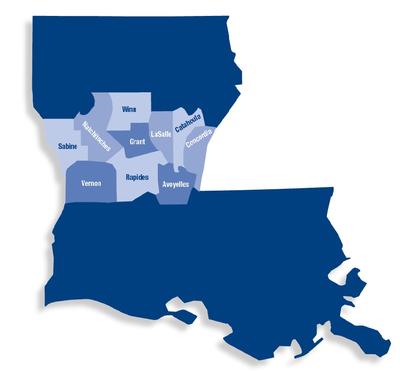History
Trade School/Vo-Tech
Since the 1930s, vocational education has been offered to the citizens of Louisiana through a system of post-secondary technical education, which also provides technical training to secondary high school students. In 1973, the legislature passed Acts 208 and 209. Act 208 provided for the reorganization of the state trade schools and increased their number from 33 to 53. This act placed a vocational-technical school within a 25-mile driving distance for any citizen requiring vocational training. Act 209 was a companion bill, which provided funds for the expansion of post-secondary vocational-technical education that was authorized in Act 208. Initially called "trade schools," vocational-technical schools have evolved to technical and community colleges primarily due to redesigned curricula that blend technical and applied academics ultimately leading to certificates, technical diplomas and associate degrees.
In 1999, a constitutional amendment established Louisiana's post-secondary technical education system. It is constitutionally governed by the Louisiana Community and Technical College System (LCTCS) Board of Supervisors, which was appointed by the governor at that time. Prior to 1999, the Technical College System was governed by the State Board of Elementary and Secondary Education/Board of Vocational Education.
Louisiana Technical College
In 1999, the LCTCS Board of Supervisors established Louisiana Technical College (LTC), which was comprised of 40 campuses offering training programs to approximately 50,000 students. The name change to LTC reflected the integration of technical and applied academic education.
Central Louisiana Technical College
In 2005, the LCTCS Board of Supervisors, under Act 506, re-organized LTC and established Central Louisiana Technical College (CLTC). During this time, CLTC was comprised of one main campus, six branches, one extension site and seven instructional service centers offering 36 programs and serving approximately 1,600 students per semester.
Central Louisiana Technical Community College
In 2012, during the regular legislative session, the legislature approved Act 760 which combined the facilities under CLTC to create Central Louisiana Technical Community College (CLTCC), a two-year technical and community college headquartered in Alexandria, La. Today, CLTCC provides comprehensive educational programs that meet the needs of its students and communities. These programs include career and technical education, general education, adult basic education, and workforce development training. CLTCC serves 8 parishes through its five campuses.
- CLTCC is a two-year technical and community college offering certificates, diplomas, and associate degrees to prepare
 individuals for high-wage, high-skill, and high-demand careers.
individuals for high-wage, high-skill, and high-demand careers. - CLTCC serves eight parishes – Avoyelles, Catahoula, Concordia, Grant, LaSalle, Rapides, Vernon, and Winn.
- CLTCC has five campuses – Alexandria (Main) Campus, Huey P. Long Campus in Winnfield, Ferriday Campus, Rod Brady Campus in Jena, and the Ward H. Nash-Avoyelles Campus in Cottonport. CLTCC also provides instruction in three state prisons and two federal correctional institutions.
- CLTCC offers career and technical education programs, general education courses, high school dual enrollment, adult basic education, and workforce development training.
- Our career and technical education programs include AC & Refrigeration, Business, Cybersecurity, Drafting, Electrical Technology, Forest Technology, Industrial Manufacturing, Patient Care Technician, Pharmacy Technician, Practical Nursing, and Welding. Programs vary by campus.
- Our General Education courses include English, Math, Science, History, Speech, and more.
- Our dual enrollment program allows high school students to take college courses while in high school and receive college credits. Students can enroll in college courses taught at their high school, online, or at CLTCC.
- Our Work Ready U adult basic education program is designed to help individuals successfully pass the High School Equivalency Test (HiSET®) and earn their high school equivalency diploma. CLTCC also hopes to help these individuals move into higher education and pursue college-level academic programs upon successful completion of the HiSET®.
- Our workforce development training includes customized training, continuing education, professional development, and industry certifications.
- The majority of CLTCC students are second– and third– generation students or the first in their family to attend college.
- Average enrollment per year is approximately 1,700 college-wide.
